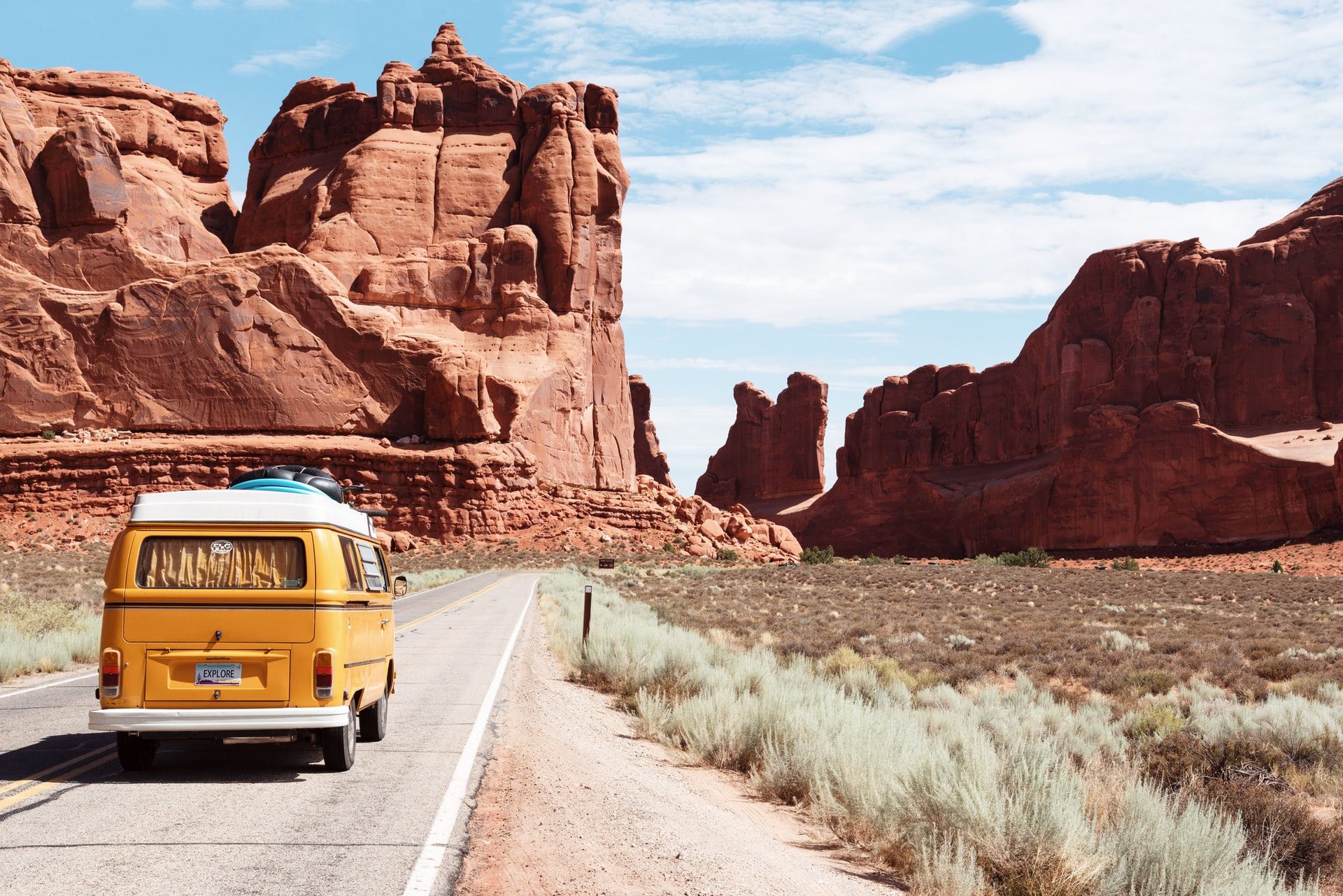The road trip, to put it plainly, is an American staple. It’s neck-and-neck with Yellowstone and privatized healthcare as the starkest example of the American spirit.
It’s no wonder why this trademark American symbol on par with apple pie has been represented in the media for over a century. From “The Grapes of Wrath” to “The Blue Brothers,” road trips have captured the public’s imagination for as long as the automobile has been a part of everyday life.
However, while many people dream about experiencing life on the road, few do it. Road trips take weeks of planning, and can often be foiled at the slightest inconvenience. While flying to an Orlando resort for a week generally offers minimal obstacles, taking a large-scale road trip has dozens of moving parts just begging to fall off at any moment.
The good news is that planning a road trip is not as complicated as it seems. By formulating a basic framework before jumping into booking lodging and drawing routes, you can take much of the stress of coordinating the large-scale operation out of the equation.
Step One: Deduce Your Desires
You may be tempted to jump into the logistics of your dream road trip before anything else. After all, the wide variety of places you will visit and the routes you take to get there are often at the heart of what makes such a trip unique.
That being said, you can’t decide where to go before deciding what you want to experience. Will your trip be one of experiencing a diverse array of natural landscapes? Do you want to party in cities across the country? Or are you chasing cultures hidden throughout the land?
These are the questions you need to answer before you even begin thinking about booking a hotel room or looking up local cuisines. By defining what you want out of your road trip, you are defining what nearly every aspect of it will entail.
Another key factor of this stage is the region in which your trip will take place. Will you ride along the northern Midwest in search of moose and maple syrup? Or will you be riding up the East Coast, hopping from one New England city to the next?
If this is your first time taking on planning a road trip, pick an area near your home. If you live in Chicago, consider planning your route through states within five to six hours away, such as Kentucky or Wisconsin. There’s no need to involve flights, rental cars and other far-flung arrangements for your virgin journey.
Make this initial process a group activity. Even if you’re the one taking the lead on this trip of a lifetime, ensure that those coming with you have their voices heard. Road trips can mean different things to different people, and you want to be able to have everyone get something out of it that accommodates their interests. If one passenger wants to hike up Washington’s Mount Rainier while another wants to tour Seattle’s local bar scene, you can plan your trip (as seen in the next step) to cater to both desires.
Step Two: The Nitty Gritty
The time has come: You finally get to scour travel sites and Yelp for the perfect destinations that fit your vision for this rubber-guided spirit journey. Or do you?
Your first job is to research. While sites like Trivago may be able to find the more mainstream attractions in your scoped area, it’s good to use supplementary methods as well. If you know anybody that has lived in or visited the area, give them a call and pick their brain for semi-secret places that “Top 10” lists may not feature. Throw out requests for suggestions on sites like Reddit and see what sticks. If you’re planning a nature-oriented trip, simply typing in “parks” in the local search bar of Google Maps will give you a plethora of destination options to peruse.
Again, it is imperative to incorporate your road-trip desires into the research process. If you’re looking to tour the cuisine of Louisiana, delve deep into what that entails so you know what to look for on restaurant menus as you book reservations. If you’re looking to hike rugged trails, take a look at sites like Hiking Project. None of these are mutually exclusive, and you can use various research sources to form the perfect mosh posh experience for your group.
Once you’ve curated a list of potential stops, it’s time to narrow it down to the ones that truly define your proposed experience. In general, you’ll want at least two days at each location, so the number of stops depends on how long you plan on being on the road.
Now that you’ve narrowed your list, you’re able to plan your route. Hop on Google Maps and drop pins at each of your stops. This way, you can see an overarching view of your whole trip and decide what order would be most efficient. Luckily, Maps also has a feature in which you can add multiple stops on a route so you can see the trip in its entirety. Make sure to write down this route based on the order you are visiting each location to ensure that, even without cellular service, you can still be on your way.
At this point, you should have a set route of unique locations based on the experience your group is chasing. You’re almost on your way to emulating Chris McCandless’ grand adventure. However, there are still a few things to check before stepping (or driving) out.
Step Three: Always Be Open To Change
While having a relatively detailed plan going into a road trip is essential, it doesn’t mean that you shouldn’t be open to change. A road trip is supposed to embody freedom, and refusing to stray from your arbitrary itinerary on such a trip is oxymoronic. This need to be open to change seeps into multiple aspects of your trip.
For example, never spend exorbitant amounts of money on lodging if you think there’s a chance you could neglect to stay there. Lodging on a road trip should be used for one thing: a place to sleep and recuperate after a long day of driving or new experiences. Unless your goal is staying at fancy resorts or famous hotels, there’s almost no reason you need to stay at a five-star establishment. Lowering lodging standards ensures that if you decide to follow an interesting tip from a local that deviates from your route, you’re not out hundreds of dollars.
The best lodging option, in my experience, is campsites. Campgrounds can be found nearly anywhere, and can often be as cheap as $20 a night in most areas. As such, skipping out on a booked campsite is never a massive detriment to your wallet. This is an especially strong suggestion for those looking for natural experiences, as camping often forces you to check out the local environments and ecosystems.
You should also be open to new experiences outside of your comfort zone. Much of the point of setting out on a road trip is seeing and doing things you have never encountered. While hand fishing for catfish or cliff jumping in Kentucky may not be activities you would normally pursue, they will always make the best memories upon your return home.
Fluidity and openness are the keys to any good road trip. No matter what your plan may be, ensure it is never impossible to stray from it.
Make a Framework That Suits You
While this basic, skeleton method of planning a road trip may work for many, you can always put your own spin on it. As said before, a road trip is about freedom — which extends even to the planning process.
Looking for help in where to set your upcoming road trip? Check out Condé Nast’s “10 Best U.S. States For Road Trips.”

















